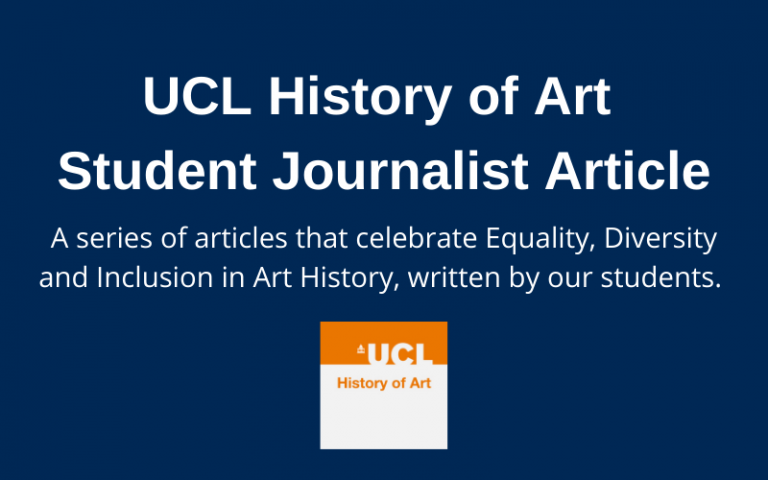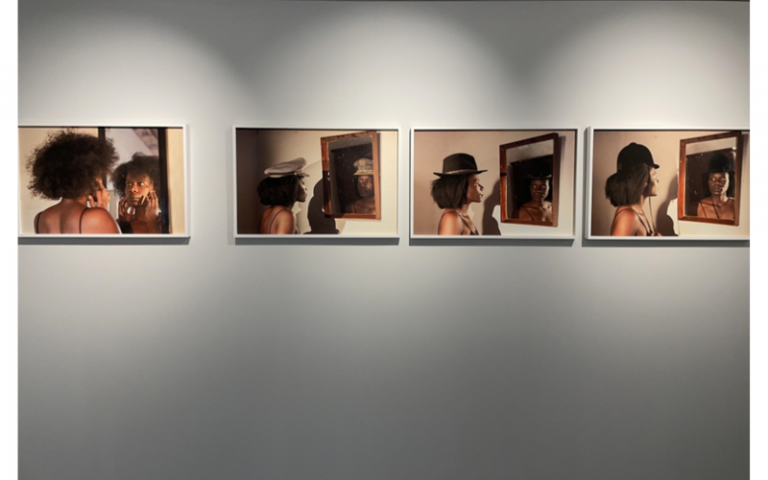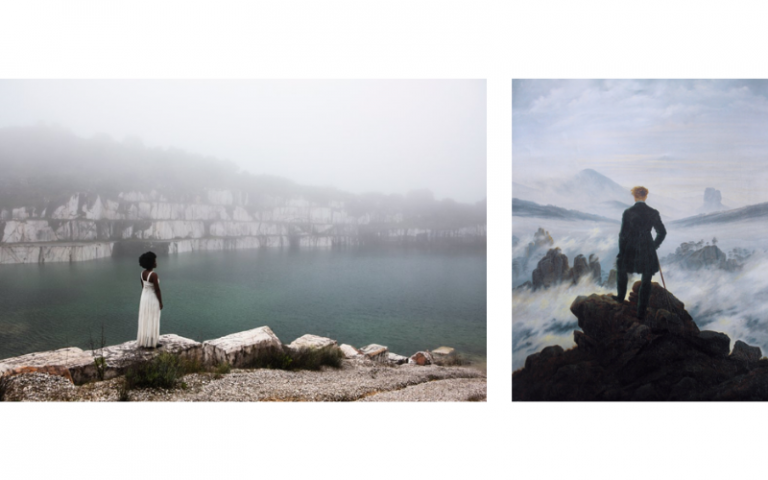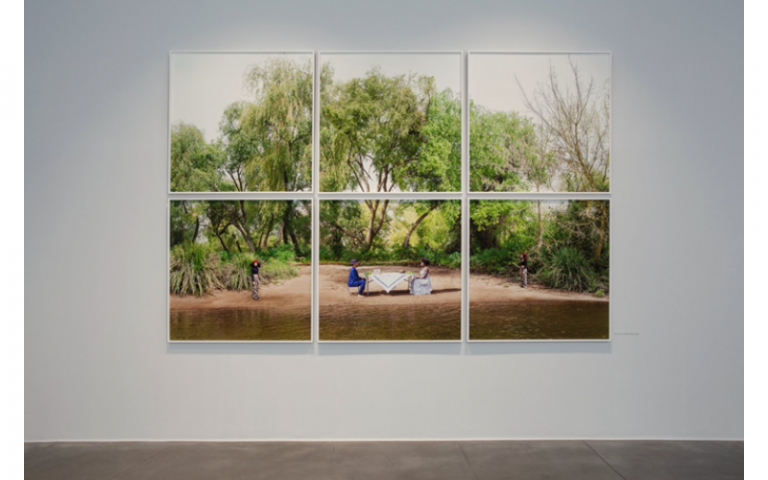Mónica de Miranda’s exhibition 'The Island' Autograph's Gallery - Student Exhibition Review
27 July 2022
As part of our commitment to Equality, Diversity and Inclusion, we have appointed three student journalists to create compelling content which links Art History and EDI. In this article, student Emilie Yang reviews Mónica de Miranda’s 'The Island' at Autograph's Gallery.

As the world slowly returns to the pace of life after a long lull of Covid-19, Mónica de Miranda’s solo exhibition The Island at Autograph’s gallery in London questions the human impact on the environment. I was first introduced to the gallery by Kimberly Schreiber, UCL History of Art PhD candidate and postgraduate teaching assistant on the course Art in the Public Sphere (Anthropology Department). The East End has been a centre of London’s thriving artistic community for years, supported by the emergence of the YBA movement in the late 1980s and the White Cube gallery in Hoxton Square. Housed in Rivington Place, designed by the Ghanaian-British architect David Adjaye, Autograph was founded to promote cultural diversity in the visual arts.
De Miranda’s latest body of works were newly commissioned by Autograph. As an Angolan-Portuguese artist, her research and artistic practice explore themes of Afrodiasporic lives and Europe’s colonial past through a black ecofeminist lens. Curated by Renée Mussai and Mark Sealy, The Island draws on a vast scope of themes such as matrilineal relationships, kinship and black presences in Portugal. The lush landscapes allude to the historical community dubbed Ilha dos Pretos, ‘the island of black people’ on the banks of the river Sado in southern Portugal.
The anthropocene is a useful interpretative framework to the exhibition. Defined as the commencement of significant human impact on the Earth and its ecosystems by Paul Crutzen and Eugene Stoermer, allusions to ecofeminism and the effects of colonialism are suggested through engagement with the landscape.

Mónica de Miranda, Mirror Me, from The Island, 2021, Commissioned by Autograph. Supported by Art Fund © Mónica de Miranda
Room 1 displays still photographic images of The Island, where a female protagonist makes a recurring appearance in various contexts and costumes. She both embodies and is accompanied by various imaginary characters; lovers, mothers, daughters and anti-colonial freedom fighters who the curators refer to as ‘peripatetic twins’. They evoke different nuances of human relationships; inter-personal as well as with their surroundings.
De Miranda’s central female protagonist is often dressed in Western clothing; dressage uniform or floor-length gowns. The costumes play an important role in her photographs. Often set in otherwise uninhabited landscapes, the elaborately dressed figures stand out, creating a juxtaposition with the untouched nature with the dressed-up, formal and almost stiff composition of the figures. The uneasiness of the figures makes us viewers question the elusive meaning of her photographs and the discordant nature of protagonists with their surroundings.
The first work we encounter is the series Mirror Me, featuring the main protagonist in a domestic setting, trying on three different hats; a naval cap, a fedora and a riding hat, looking at her own reflection. The four photographs feature the artist in slightly different positions to the mirror as if in conversation with herself. Her direct gaze meets her reflection fiercely in the reflection, unaware of the viewers. Almost identical apart from a slightly different position in relation to the mirror and the hats, the first series of works that we encounter sets the tone of the exhibition; self-reflection and personal identity shaped by the use of costumes.

Left: Mónica de Miranda, Whistle for the Wind, from The Island, 2021, Commissioned by Autograph. Supported by Art Fund © Mónica de Miranda
Right: Caspar David Friedrich, Wanderer above the Sea of Fog, c. 1818
Whistle for the Wind features the female protagonist dressed in a floor-length white dress and gazing out into the mist. The solitary figure is dwarfed by the vast expanse of water and white stone cliffs severed by dark vertical veins. One might recall Capar David Friedrich’s Wanderer above the Sea of Fog (1818). Here, de Miranda furthers our relationship with nature by considering rocks and cliff formations as repositories of human experiences and memories. Intrinsically linked to colonial excavation, they are witnesses of past and ongoing ancestral and ecological trauma, manifesting as gender-based violence over bodies, lands and mineral extraction. The anthropocene defined a new planetary era since the 18th century as a geological, ecological and anthropological concept and de Miranda explicitly interrogates histories of colonialism through an ecofeminist lens.

Mónica de Miranda, The Lunch on the Beach (After Manet), from The Island, 2021, Commissioned by Autograph. Supported by Art Fund © Mónica de Miranda
A highlight of the exhibition is Lunch on the Beach. The photograph occupies an entire wall, assembled in six different squares individually framed. The unsettling juxtaposition between the rigid composition of the table setting against a backdrop of foliage and unruly trees growing in every direction draws us into the composition.
A man and a woman sit at each end of a table, staring into each other’s eyes. The ‘peripatetic twins’ wearing matching combat trousers and a red beret make a recurring appearance in several images, including The Lunch on the Beach (After Manet). As the artist explains, they embody coexisting duality and multitude of identities - revolutionary and spiritual, the individual and collective, resistance and remembrance. Standing still and directly front-facing, they claim rigid and unmissable presence in the otherwise peaceful and lush scenery of a luncheon. Separated from the couple at the table not only by their sociopolitical identities, clothing and mood, they have been severed by the frames which separate the image into six squares. Perhaps the sense of discomfort stemming from the juxtaposition of seemingly contradictory elements alludes to the disjunction of European colonial past and heritage with African liberation movement, and the uncomfortable coexistence.
Although Manet surely must have painted his subjects while on the sand himself, this composition suggests it was captured above the surface of water. De Miranda, confusingly or cleverly, merges two titles of Manet’s; Lunch (Le Déjeuner sur l'herbe, 1863) and On the Beach (Sur la Plage, 1873). The former has been the subject of fascination since its rejection in the 1863 Salon and has served as inspiration for artists, firmly claiming its place in the Western canon of art. By referencing the infamous painting but reversing the perspective of On the Beach, de Miranda not only echoes Manet’s iconic painting, but also questions her relationship to the Western traditions of artmaking. The island is a place of refuge, an oasis, but also retains the history of colonialism; it can never completely break with the past.
De Miranda’s photographs explore the creative and critical power of photography in questioning the notions of the human body’s relationship to nature. As the film screening in Room 2 plays out the riddles of poetic narrative of de Miranda’s still images, The Island urges us to consider different modes of being to develop a more conscious connection between the past, our bodies and the islands we inhabit and all that they hold towards the possible futures in the post-pandemic world.
The history of Autograph compelled me to choose this exhibition as the subject of this exhibition review. Founded in 1988 Autograph has since supported photographic practices that contend with questions of race, identity, representation, human rights and social justice. Not only in principles and vision, the gallery is powered by renewable wind sources with zero carbon emissions. Autograph embodies and delivers its vision in the daily running of the space as well as within works that it represents. Mónica de Miranda’s The Island pertains to the question of EDI not only through the exploration of gender, race and postcoloniality but also questioning our impact on climate in the post-pandemic world and the human destruction of nature.
 Close
Close

